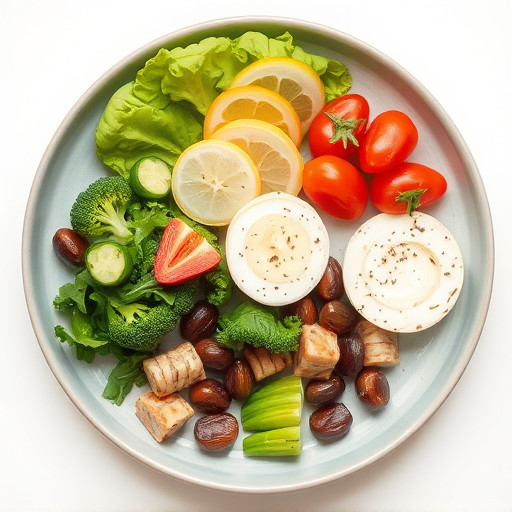Choose containers designed for freshness (glass, plastic with airtight lids) over metal cans or rubber seals. Use multi-compartment containers for organized storage. Prioritize temperature control, humidity management, and minimal air exposure. Label and date containers for tracking meal ages. Practice portion control by measuring tailored serving sizes. Store pre-portioned meals in airtight containers or freezer bags. Organize refrigerators and freezers strategically for optimal space utilization.
Maintaining fresh meal preps is essential for preserving flavor, quality, and nutritional value. This article provides practical tips to help you maximize the freshness of your prepared meals. We’ll explore choosing suitable containers that promote optimal preservation, understanding fundamental food storage principles, mastering portioning for efficient use, and effectively utilizing refrigerator and freezer space. By following these guidelines, you can keep your meal preps tasting delicious and safe to eat for longer periods.
- Choose Suitable Containers for Optimal Preservation
- Understand Food Storage Principles for Maximum Freshness
- Master the Art of Portioning for Efficient Use
- Utilize Refrigerator and Freezer Space Effectively
Choose Suitable Containers for Optimal Preservation

When selecting containers for meal preps, opt for options designed to preserve freshness. Glass and plastic containers with airtight lids are ideal, as they create an inert atmosphere that slows down oxidation and moisture loss. Avoid using metal cans or containers with rubber seals unless they’re specifically designed for long-term storage, as these can react with certain foods.
Consider the type of food you’re storing. Some containers have different compartments or layers to accommodate various meal prep components like proteins, grains, and vegetables. This not only keeps them organized but also helps maintain optimal preservation conditions for each ingredient, ensuring your meals stay fresh and tasty throughout the week.
Understand Food Storage Principles for Maximum Freshness

Storing meal preps isn’t just about keeping your food safe from spoilage; it’s an art that ensures each bite delivers maximum freshness and flavor. To achieve this, grasp the fundamental principles of food storage. Firstly, control temperature; most perishables require refrigeration to slow bacterial growth. Chilling your preps also helps maintain texture and prevents oxidation, which can cause off flavors. Secondly, understand humidity levels. Some foods, like fruits and vegetables, thrive in high humidity to prevent dehydration, while others, such as meats, need a drier environment to avoid spoilage. Thirdly, consider air exposure. Properly seal your meal preps to limit oxygen contact, which accelerates degradation. A well-sealed container or wrap can significantly extend freshness. Lastly, label and date your storage containers. This simple step helps you track meals’ ages, ensuring you consume them within their prime quality window.
Master the Art of Portioning for Efficient Use

Portion control is key when it comes to keeping your meal preps fresh and minimizing food waste. Take the time to measure out appropriate serving sizes for each dish, ensuring you consider individual portion needs based on age, activity levels, and dietary requirements. Pre-portioned meals not only help maintain quality but also encourage balanced eating habits.
By dividing recipes into manageable portions, you can easily store them in airtight containers or freezer bags, locking in freshness and flavor. This practice streamlines your meal preparation process, as you’ll have ready-to-go components, saving time and reducing the temptation to opt for less healthy convenience foods.
Utilize Refrigerator and Freezer Space Effectively

Maximize your refrigerator and freezer space to ensure optimal storage for meal preps, maintaining freshness. Utilize containers with airtight seals, labeling them with dates and contents. Stackable shelves or bins can help organize smaller items while keeping them easily accessible. For larger meals, consider using vacuum seal bags in the freezer to prevent freezer burn and preserve quality for longer periods.
Make efficient use of door shelves and drawers as well. Place items that are most frequently used at eye level, while less frequent or thicker foods like frozen vegetables or blocks of cheese can be stored in harder-to-reach areas. This strategic arrangement ensures you use your space wisely, keeping perishables fresh and accessible for your convenience.
By adopting these practical tips on container selection, understanding food storage dynamics, portion control, and efficient refrigerator/freezer management, you can significantly extend the shelf life of your meal preps. Freshness is key to maintaining flavor, nutrition, and reducing waste, ensuring your prepped meals remain delicious and healthy until it’s time to enjoy them.
